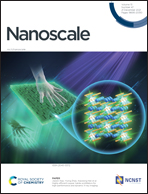Polydopamine nanospheres coated with bovine serum albumin permit enhanced cell differentiation: fundamental mechanism and practical application for protein coating formation†
Abstract
Protein coating is a strategy for modifying and improving the surface functional properties of nanomaterials. However, the underlying mechanism behind protein coating formation, which is essential for its practical applications, remains largely unknown. Herein, we investigate the fundamental molecular mechanism of protein coating formation. Polydopamine nanospheres (PDANS) coated with bovine serum albumin (BSA) are examined in this study due to their wide biomedical potential. Our results demonstrate that BSAs can flexibly bind to PDANS and maintain their structural dynamicity. Our findings unveil that regular structure formation arises from BSAs lateral interactions via electrostatic forces. Notably, the protein coating modified PDANS surface enhances cell adhesion and proliferation as well as osteogenic differentiation. Such an enhancement is attributed to complementary surface properties provided by the dynamic PDANS–BSA complex and regular structure caused by BSA–BSA interactions in protein coating formation. This study provides a fundamental understanding of the molecular mechanism of protein coating formation, which facilitates the further development of functional protein-coated nanomaterials and guides the bioengineering decision making for biomedical applications, especially in bone tissue engineering.



 Please wait while we load your content...
Please wait while we load your content...